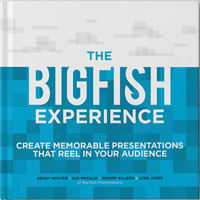Presentation or Video?

Both presentations and videos are great tools for your business, whether they are for marketing, sales or just plain informative. Today, businesses take advantage of both styles in order to maximize their information output, but it takes more thought than you might think in order to decide the correct time to pursue them.
Two different forms of showcasing information. Two different purposes and processes. But which one do you use and when? They are very similar, of course, but they can be utilized at different times in different scenarios depending on the overall goal.
The first question you’ve got to ask yourself is an obvious one.
What do you want to accomplish?
Before you get your designers or videographers in for a meeting, you’ve got to determine the end goal that you want to achieve. No matter what, you’re trying to persuade or inform your audience in the most original, entertaining way possible. You know that you have a solution to a problem, and you’re trying to solve it in the most effective manner. But what specifically about the problem are you trying showcase? Does your firm or group want to radically alter the audience’s current perception? Do you want to simply recruit people based on your offered solution? Once you’ve answered these types of questions, you’ve got to set a tangible goal. You’ve got to sit down, crunch numbers and give yourself a clearly labeled end goal before you begin planning whether video or presentation is the best route to take.
Once you’ve got a goal in mind, the next step is knowing your audience.
This is a crucial step because it allows you to narrow down how your audience will perceive the information, which is of the utmost importance in any sort of project. By catering to your audience, you are shortening the gap between your solution and their acceptance of your solution. Get on their page first, and then begin plotting your course of action to reach their hearts and minds. Some common ways to begin finding the path to the core of your audience are asking some questions to yourself and your team. Why should the audience choose your idea over a competitor’s? (What’s your value proposition?) What type of audience is this? Business professionals or college students? Where will it be shown? On a laptop, in a meeting room or at a conference? Questions like these help you to get a scope for your project because your work will be aimed directly toward a more specific type of demographic, psychographic or geographic concentration. If you know who you’re talking to, then you can gauge how to talk to them.
Now that you’ve determined who your audience is and what they want, your next step is planning the best way to reach them.
People perceive things in many different ways. Some are visual learners, while others like to be spoken to. Determining this element of your session is a key component in choosing between a presentation or a video. Also, you’ve got to think about the vehicle in which your audience will receive the message. You might be working on marketing a product or service, and on this project your goal is to spread the word as much as possible. A video is the more reasonable choice because you can spread it over many different platforms, such as social media networks, blogs and even television commercials. Knowing the best way to reach someone allows you to finally make the choice about whether a video or a presentation is most effective.
For example, if you want to be short and sweet, go with video. Videos tend to get to the point because they are capturing real-time action and scenarios. Videos also help when trying to market your message on multiple platforms. Videos can be shown on various social media networks and have the potential to go viral. Videos are independent of a speaker and can also serve as breaks within a presentation.
On the other hand, presentations are very useful for a more interactive, connected experience. If you show a video at a conference or in a boardroom it can be impersonal and sometimes significantly less informative. A presentation allows you to be much more persuasive because you have complete control. As the presenter, you are able to go at your own pace and use your own words. Also, a presentation allows you to adapt to any situation. If a video crashes, the next thing is usually a back-up speech or explanation that ruins credibility and the flow of the situation.
However, these two different methods can be combined to create a great experience for your audience. Incorporating a video in a presentation, whether it is an introductory video or a break in the presentation, can keep an audience attentive and focused. A video can highlight a certain area of the presentation and allow the audience to re-focus on the information of the presentation.
When it comes down to it, both presentations and videos are great tools to inform, persuade or entertain your audience. All it takes is a little planning and some research to truly take advantage of the media you have and hit the nail on the head. Your goal, audience and situation are all factors that influence your choice. It’s up to you to what path you’ll take.
So, what do you think? Have you used video more effectively than a presentation? If so, why? Do you have any comments or experiences you’d like to share? We’d love to hear from you. As always, we’re willing and able to take in any and all ideas or experiences that you have found beneficial. Hit us up on Facebook, Twitter or in the comments below to get in touch with us and share your thoughts!




I am going to experience with frequent video blogs and see how that goes. Any suggestions?
Hi Rich, if you’re going to experiment with video blogging, my best advice would be to 1)Remain consistent – It doesn’t matter if it’s once a week or once every other week or every day, just maintain a regular schedule. 2) Be original – Everyone has seen the typical video of a professional talking about the latest in his or her industry. If you want more views on your video (and subsequently your site), you’ve got to stand out by being conversational and relevant to your audience. Talk to them on a personal level and your responses will grow. 3) Keep it short – No one wants to sit through a 5 minute video. The best videos are snippets of 1-2 minutes that keep your audience interested. 4) Keep it simple – Jargon and complicated processes only deter potential or existing consumers. You don’t have to dumb it down to make your point, but simply discuss your topic in terms that everyone can understand.
These are only suggestions, though. Keep researching to find out the best possible way to take advantage of video blogging. Good luck!